Lost and Found: Rediscovered Inuit Textile Prints from Kinngait Studios
Bowdoin College’s Peary-MacMillan Arctic Museum celebrates the legacy of Inuit textile printing and its influence on contemporary design.
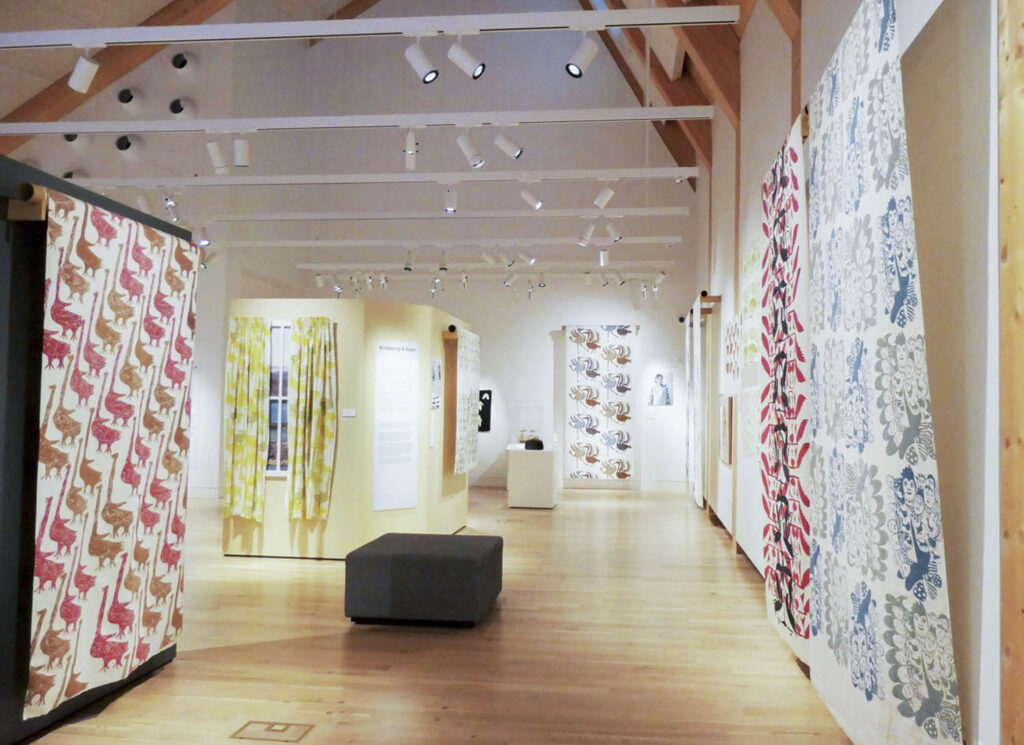
Kinngait Studios is a fine art printmaking facility in the Arctic Circle in the Canadian territory of Nunavut. It has been operated by the West Baffin Cooperative since the late 1950s, when the Canadian government introduced stenciling, stone-cut printmaking, and screen printing to Inuit artists who had not previously had access to or been aware of the processes and materials involved in hand-printing textiles.
For several years beginning in 1959, Inuit artists at Kinngait innovated and freely explored the possibilities for expression in a medium entirely new to them. They created sophisticated, illustrative, joyful graphic patterns and motifs inspired by Arctic wildlife, mythical creatures, and daily life. Their work reached an international audience and received important design awards, including a Canadian Enterprise Award in 1967. Designs were licensed to clothing and home decor manufacturers in southern Canada and beyond. Ultimately, however, the Kinngait printed textiles didn’t meet the government’s sales expectations, and production was subsequently shut down. The vibrant prints currently on view at Bowdoin College’s Peary-MacMillan Arctic Museum in Brunswick were shelved away and forgotten for years, until a storage box containing them happened to (literally) fall on William Huffman, marketing manager for the West Baffin Cooperative, in 2016.
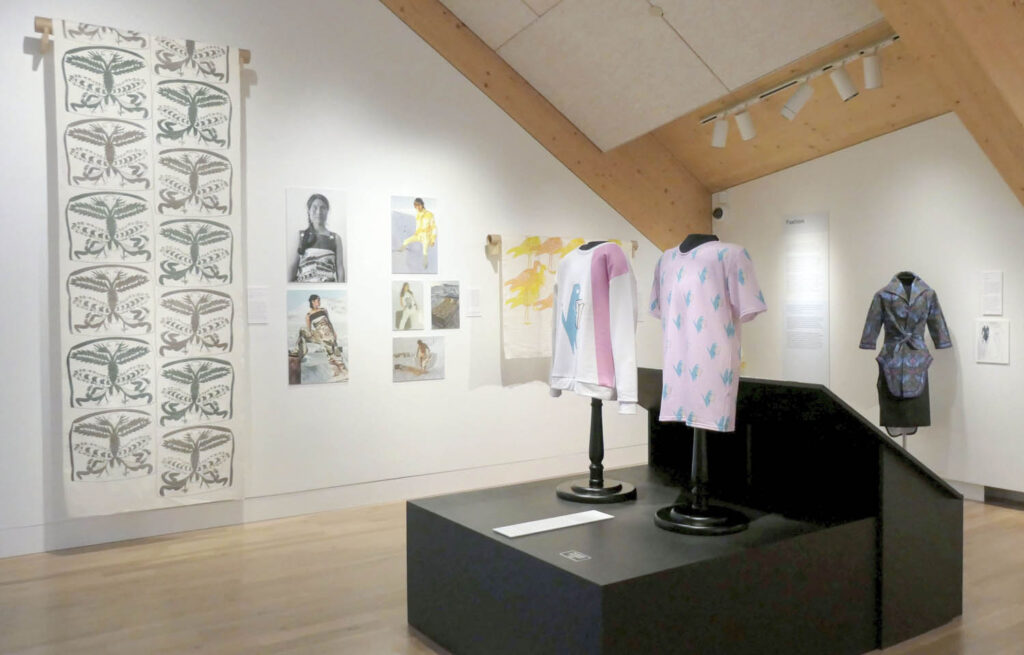
Nooks Lindell of Hinaani Design, Standing Its Ground, 2019, sweatshirt and T-shirt (foreground), and Martha Kyak of InukChic, Dress, 2019 (background).
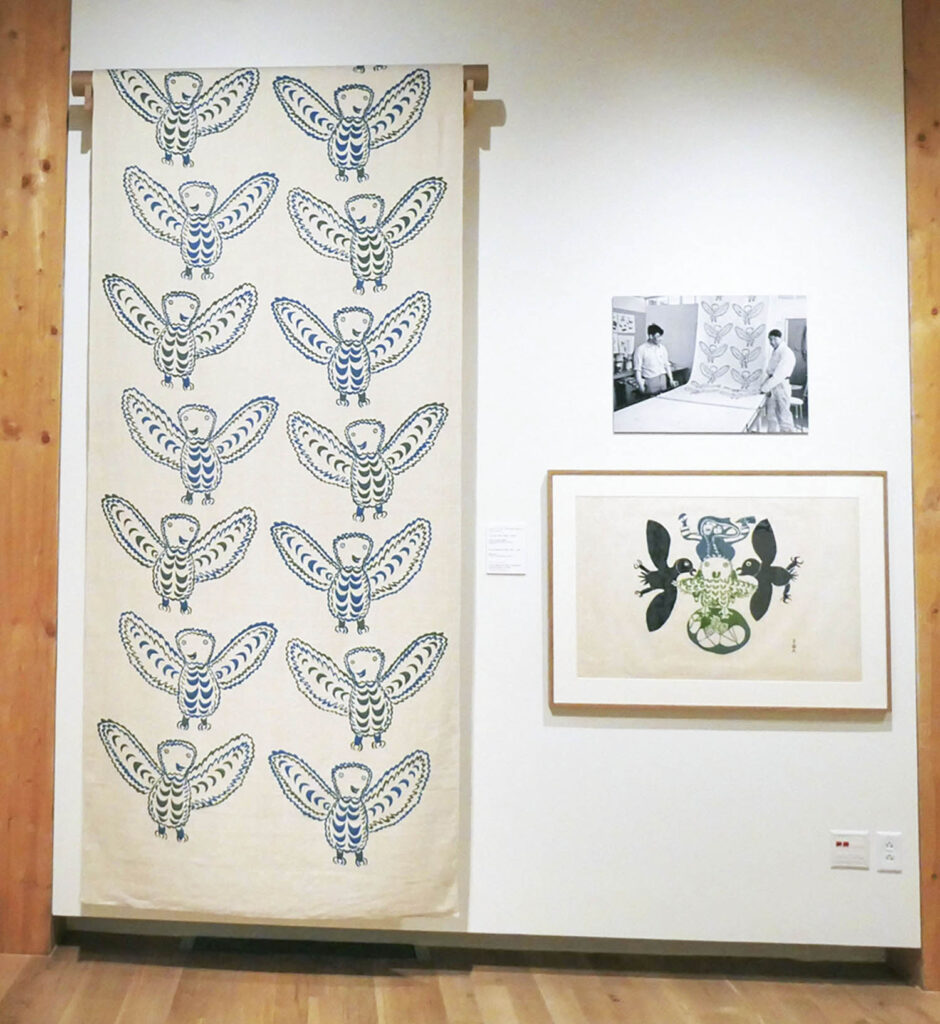
Installation shot including Pitseolak Ashoona, Snowy Owl, 1950s-1960s, screen-printed linen, 139 x 46 inches.
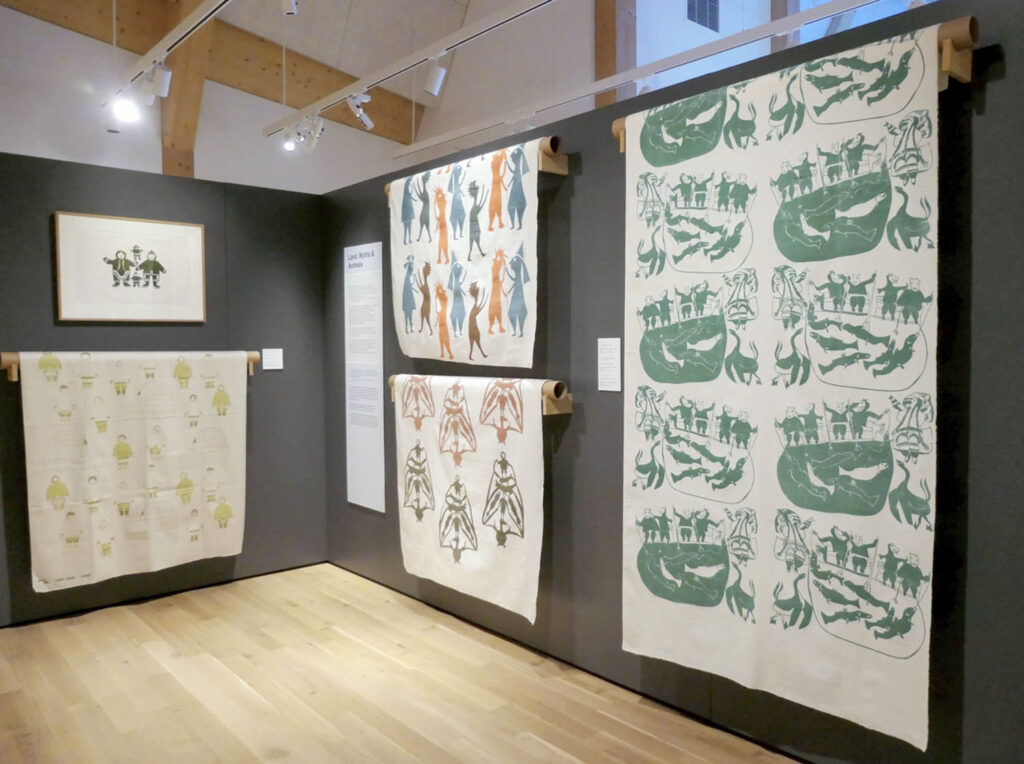
Installation shot including unidentified artists, untitled, 1950s-1960s, screen-printed unbleached cotton, 89 x 46 inches (far right).
Printed Textiles from Kinngait Studios is curated by Roxane Shaughnessy, senior curator and manager of collections at the Textile Museum of Canada. The exhibition is concerned with this brief flourishing of textile printing at Kinngait Studios—including works by Kenojuak Ashevak (1927–2013), Pitseolak Ashoona (1904–1983), Parr (1893–1969), and Pudlo Pudlat (1916–1992)—along with its legacy and vitality, and the influence of these printed textiles on contemporary Inuit fashion designers including Martha Kyak of InukChic, Nooks Lindell of Hinaani Design, and Tarralik Duffy of Ugly Fish. Printed Textiles occupies an enormous third-floor gallery with a soaring pitched roof, warm wood tones, and diffuse light. Yardage of the textile prints hang from rolls installed high above the line of sight, accentuating the cathedral-like ceiling and lending an elegance to the whole visual experience. Each print is accompanied by wall text in Inuktitut and English, and includes the name of the artist(s) if known. Excellent supporting materials include photographs and excerpts from historical and contemporary interviews with the Kinngait community. Shown along with the printed textiles are clothing and objects from the Arctic Museum’s own collection, some of which replace objects from the original Textile Museum of Canada exhibition that are made from animal skins and thus cannot be imported.
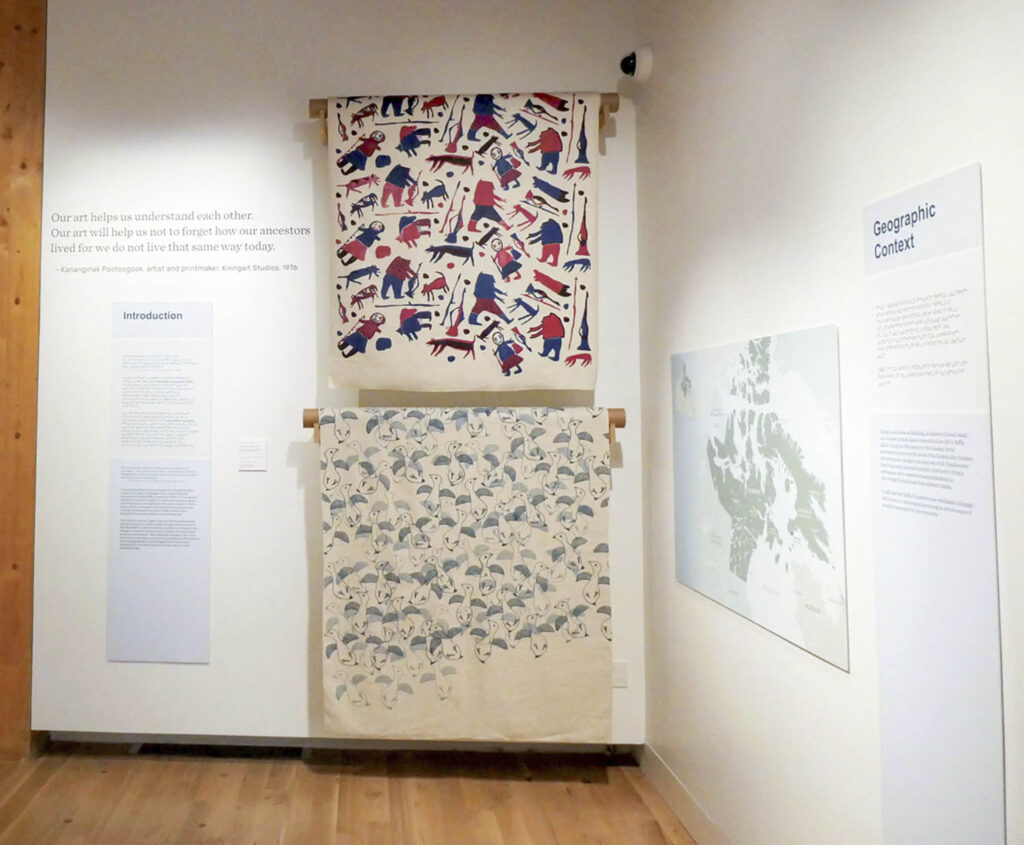
Installation shot including Parr, Parr’s People, 1950s-1960s, screen-printed cotton sateen twill, 69 x 45 inches (center) and Sharni Pootoogook, Gosling, 1950s-1960s, linen screen printed 82 x 45 inches (center bottom).
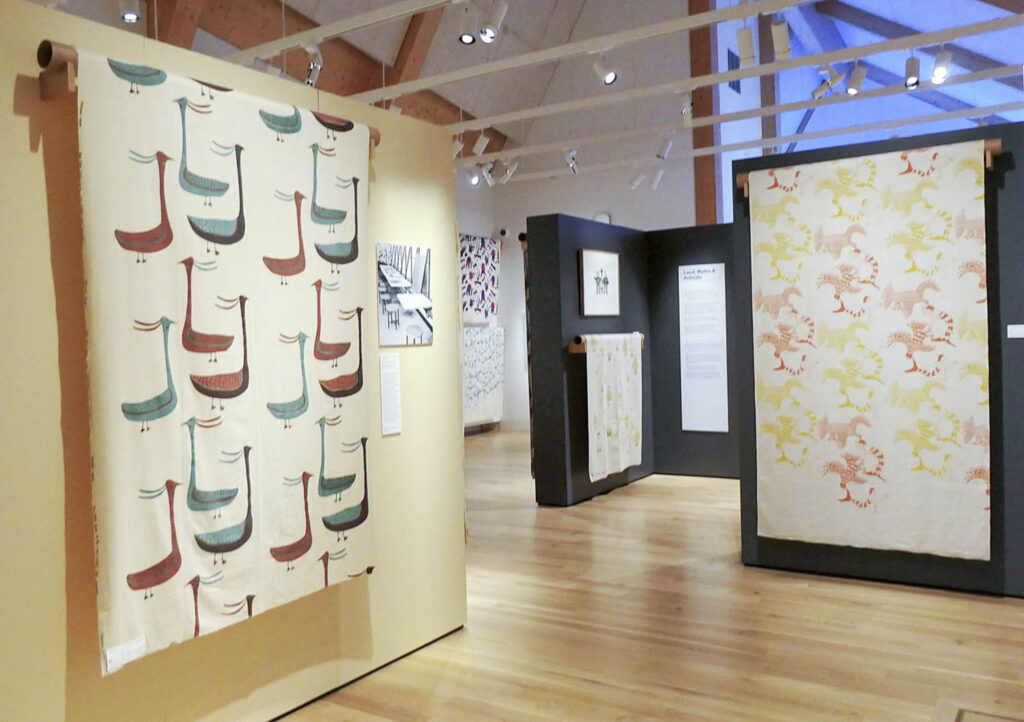
Installation shot including Anirnik Oshuitoq, Fabulous Geese, 1950s-1960s, screen-printed unbleached cotton, 72 x 49 inches (far left).
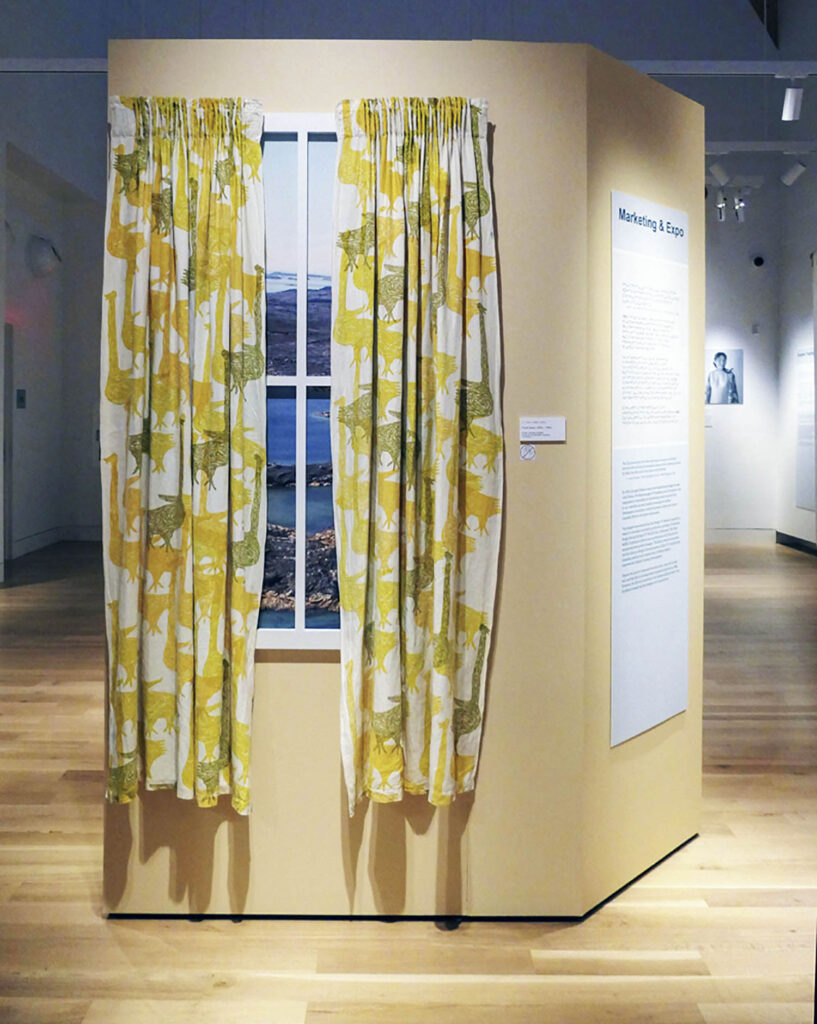
| Parr, untitled, screen-printed linen, installed as window curtains.
Archaeologist and Arctic Museum curator Genevieve LeMoine first encountered the Kinngait works on a visit to the Textile Museum of Canada in 2018. “I was blown away, and I envisioned the exhibition traveling to Maine, even though I knew we’d have to wait years.” The Peary-MacMillan Arctic Museum, named for nineteenth-century Arctic explorers (and Bowdoin alumni) Robert E. Peary and Donald B.
MacMillan, is part of Bowdoin College’s John and Lile Gibbons Center for Arctic Studies. The center opened in 2023 and encompasses a museum, research areas, and teaching spaces. It was designed by the interdisciplinary design firm HGA as one of the first two commercial mass timber projects in the state of Maine. (The other project, Barry Mills Hall, is next door.) “The new space is transformative for visitors, and in terms of what we can offer,” LeMoine says.
ᖃᓪᓗᓈᖅᑕᐃᑦ ᓯᑯᓯᓛᕐᒥᑦ Printed Textiles from Kinngait Studios will be on view at the Peary-MacMillan Arctic Museum’s John and Lile Gibbons Center for Arctic Studies at Bowdoin College in Brunswick until October 26. This is the first and currently the only U.S. venue for the exhibition.